The country of Peru is found on the central western coast of South America, bordered by Chile, Brazil, Bolivia, Colombia and Ecuador. It is home to the world's highest navigable lake, Lake Titicaca, which it shares with Bolivia, and the world's deepest canyons, Cotahuasi and Colca. It's marked by three different climatic zones: the desert coastal region, central Andean mountain region, and the eastern Amazonian plains.
Eastern Peru includes the Amazon Basin, or Low Amazon, which covers around 60% of the country's territory. This vast tropical forest receives 78.7-157.7in of rain each year, with over 75% humidity and temperatures ranging from the low to mid 80s. Its many rivers include the Amazon, Marañón, Huallaga, and Ucayali. The unrivalled diversity of exotic plants and animals, as well as native tribes upholding traditional ways of life, has inspired a rising popularity with tourists, although much of the region remains untouched and protected.
The vast Andean mountain range, from fertile valleys to glacial peaks, houses the most microclimates in Peru, and the eastern side by the Amazon basin (the jungle-eyebrow, or high jungle) boasts the world's highest biodiversity. Some of its imposing peaks exceed 20,000ft above sea level. The most famous icon of the Inca Empire, Machu Picchu, is found here along with a great variety of other Incan relics, from trails, shrines and forts to astronomical observatories and agricultural terraces. The river valleys afford for rafting and kayaking as well as other active adventures. The year is split into two seasons, rainy and dry: dry season spans April to October and is characterized by warm sunny days and cool nights; November to March is the rainy season, when daily temperatures cool and some trails can be affected or closed.
The central and southern coast is subtropical desert, with winters (June-Sept) marked by cloudy skies and morning fog, and sunny summers (Dec-Mar) with extremely scarce rainfall. Temperatures are mild, from lows averaging 57.2 °F to highs around 84 °F, rarely falling below 53.6 °F or exceeding 84 °F. The central coast (La Libertad, Ancash, Lima) is temperate and spring-like almost year-round. The southern coast (Ica, Nazca, Arequipa, Moquegua, Tacna) is drier and
Peru's official currency is Nuevo Sol, which replaced the hyper-inflated Inti in 1991 and throughout 2011 thus far has been exchanging at around S/.2.70-2.79 to the US Dollar and S/.4.00 to the Euro. It divides into 100 céntimos, with the S/.200-note being the highest printed denomination and the 1 céntimo coin the lowest. (Coins under 10 céntimos are rarely used and might be refused by vendors.)
Over the last decade Peru has grown by over 5% a year, and even in the midst of global recession, growth since 2006 has averaged 7% growth. The Peruvian economy was South America's fastest-growing throughout the last 5 years, and one of the world's fastest-growing in 2011 thus far. This period of hard-won stable growth has cleared the way for the rapid appearance of new roads, shopping malls and multiplex cinemas throughout the country and new skyscrapers in Lima, where housing prices in ritzy neighborhoods nearly doubled in just two years.
This comes after a turbulent period in the 80's and 90's, when Peru was scarred by violent clashes between the state and leftist guerilla groups, astronomical inflation, and occasionally negative growth. Since then, however, favorable conditions have attracted increased foreign investment: The 1st condition has been a boom in prices for minerals of which Peru has rich deposits; the 2nd has been the fiscally rigorous market-oriented policies instated by Alberto Fujimori in the 1990s and improved upon by Alejandro Toledo and Alan García, which sought price stability, open trade, and foreign investment. Current growth is driven by the exploitation of rich copper, silver, lead, zinc, petroleum, and gold deposits and the exportation of coffee, sugar, cotton, fish and fish products. Stability and increased infrastructure investment has also introduced tourism as a new growth industry in Peru.
Despite improved social indicators such as a 24-spot climb in the UN Human Development Report, poverty is still crippling for many communities in the southern Andean highlands. The task before recently-elected President Ollanta Humala is to address the problem of income inequality and rural poverty, advancing social policy while maintaining the impressive growth of the last decade.
Remains of nomadic hunting tribes more than 11,000 years old have been unearthed in Peru, and the oldest civilizations arose in Paracas, Chilca, and Huaylas 8,000 years ago. The oldest city on the continent with remains surviving to this day was Caral, built around 2500BC north of Lima. Over the last 3000 years plants such as corn and cotton were cultivated and animals such as the llama, alpaca and guinea pig were domesticated. Practices such as spinning, knitting, basketry, and pottery were developed. Some of the most powerful civilizations include the Paracas (300BC), famous for their technicolor ceramics and textiles, the Moche and Nazca (100BC-700AD, the former known for their metalwork and the latter for the mysterious Nazca lines. Floods and droughts weakened these coastal nations, allowing for the rise of the inland Huari and Tiwanaku cultures, which themselves were succeeded by city-states and the Chimor and Chachapoyas empires. Over time social organization and agricultural techniques advanced, but peacefully or violently, all would find themselves incorporated in the great Inca Empire.
The Inca Empire was pre-Columbian America's largest, uniting Ecuador, part of Colombia, northern Chile, northwest Argentina, Bolivia and Peru in a territory known as Tahuantinsuyo (the four corners). It was organized in dominions with a hierarchical society, with Cusco as the political, administrative, and military center and the Inca ruler as the representation on Earth of the supreme deity, the sun, Inti. The Inca Empire was connected by a massive system of roads known as the Inca Trail, parts of which survive to this day. Thanks to their admirable stonemasonry skills, Peru retains many examples of Inca as well as pre-Inca architecture, city planning, and agricultural and hydraulic engineering.
Francisco Pizarro and the other Spanish Conquistadores arrived in 1531 in search of riches and quickly conquered the Inca, aided by smallpox, horses, and a devastating civil war between Inca princes Atahualpa and Huáscar. Huáscar was captured by Atahualpa's troops the year the Spanish arrived and Atahualpa was captured by the Spanish the following year, effectively ceasing the organized Inca resistance. Both would b
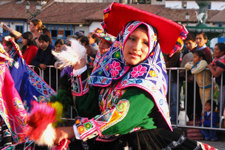
Striking Cusco (Qosqo: Navel of the World) enchants visitors with its ornate colonial structures resting atop Inca bases and sites like the massive Fortress of Sacsayhuaman and Qorikancha, the...
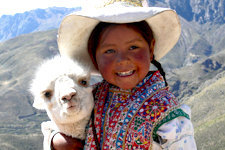
Sprawling along the mountainous desert leading into the western Andean slopes, at the foot of El Misit Volcano, is the Peru's second most populous and second most industrialized city, Arequipa....
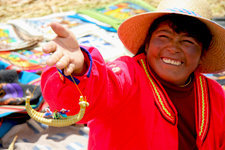
As the capital of the Puno Province, it is the largest city in the southern altiplano and the 3rd most popular tourist destination in Peru, with many tourists stopping by after visiting Lima and...
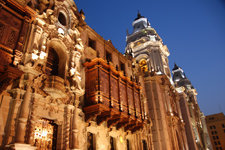
The Peruvian capital of Lima is the country's largest city, with a population of nearly 9 million one third of the population of Peru. Its history spans millennia, with its pre-Columbian...
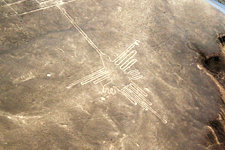
Sunny Nazca city is the perfect stop for those looking for a respite from the chilly air of Cusco or Puno. Travelers make a point of visiting in order to view the Nazca Lines, but Nazca has more...
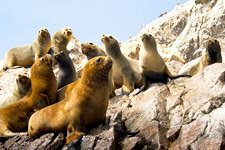
The city of Ica in the central south of Peru, is the capital of the department of the same name, situated in the narrow valley formed by the Ica River. Bordered on one side by the Pacific Ocean...
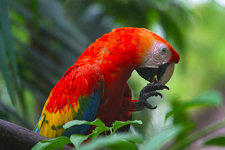
Iquitos in northeastern Peru, on the left bank of the Amazon River, is one of the most important cities of the Amazon and Peru's principal river port. It can be accessed by river or air, with...
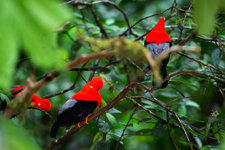
The city of Puerto Maldonado is the capital of the Madre de Dios Department in southeastern Peru, 34 mi west of the Bolivian border, where the Tambopata and Madre de Dios rivers meet. Often...